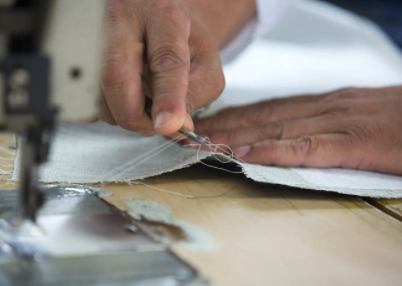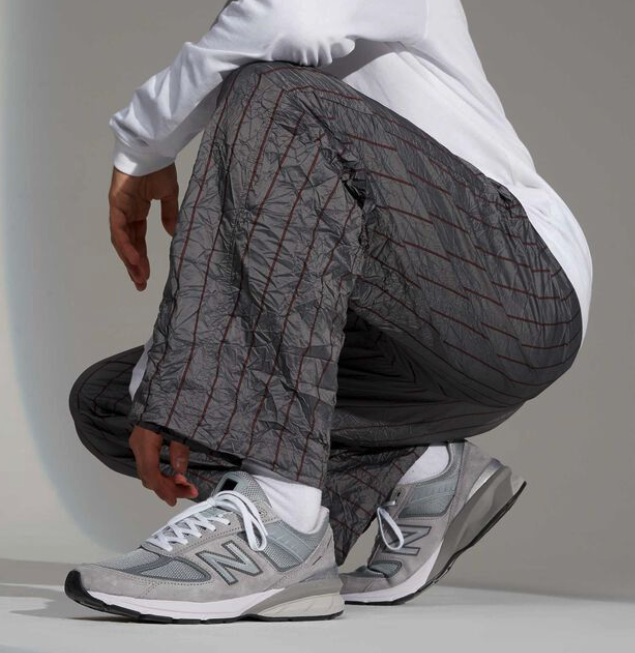Introduction
“Clothes not made in China” is one of the top searched-for topics on this site. The reason is pretty clear. If you search “clothing brands not made in China” on Google, you get tons of misleading information.
For example, as of the time of this writing, the first result on Google is a fashion blog, and the first brand listed on it is “Brooks Brothers”. Right away I knew something was wrong, because I own a lot of Brooks Brothers shirts myself (purchased way back before I caught the “not made in China” bug) and practically all of them were clearly labeled as Made in China. This was corroborated on blogs as early as 2008.
Unfortunately, for whatever reason–laziness, sloppiness, or just being downright misleading, there are lots of sites out there like this. It’s one of the reasons I wanted to start this site myself.
Why it’s aggravatingly difficult to find whether clothes are made in China
The challenge is that it’s very, very difficult to find out where companies source their products. It’s no secret that China is by far the largest producer and exporter of textiles and clothes in the world. Why? It’s simple. Think of the late 19th and early 20th centuries when industrialization hit the garment industry. New York City became the center of mass production, and for the first time in history people bought clothes rather than making it. But industrialization came at a cost. New York’s tenements were filled with sweatshops of immigrants and even children willing to put up with inhuman working conditions to support their families. There were no such things as labor laws or environmental regulation.
These conditions led to the rise of trade unions and new regulations to ensure fair and humane working conditions. That worked fine until the 1960s and 1970s, but with the advent of air travel, telecommunications, and more efficient shipping, suddenly the world opened up, and manufacturers could exploit foreign labor in countries where living standards weren’t as high as the United States. That led to a flood of manufacturing going to Asia.
Nations like Japan and Taiwan were the first countries United States outsourced to in the 1970s and 1980s. But the standard of living quickly increased in those countries.
In the 1990s, there was a big push to open up trade with China, which led to China’s entry into the WTO in 2001. Ostensibly, politicians claimed that doing so would inject Western-style freedom into China, since the “Invisible Hand” that Adam Smith talked about would invariably provide social benefits to China that would open Chinese citizen’s eyes to demand reforms in their government.
Of course, with the benefit of hindsight, we can see that this was complete folly on the part of American politicians and corporate executives. Armchair economists love to cite Smith’s Invisible Hand, but they ignore his Theory of Moral Sentiments. Countries like Taiwan and Japan respected the US, as well as things like intellectual property, human working conditions, and environmental responsibility. But the China Communist Party doesn’t respect any of that.
And the perfect storm happened in the 1990s where “moral sentiments” crumbled, both in US Corporations that abandoned principles for profits and shut down its own factories (destroying entire communities and abandoning pride of craftsmanship forever), as well as in a China government that encouraged its manufacturers companies to low-ball any other manufacturer, and enabled them with weak legislation and enforcement of labor and environmental law and openly flaunting adherence to international law, knowing that those most likely to enforce those laws in the WTO and the US government were bought and paid for.
And so the result? American executives enjoyed using sweatshop labor as they hadn’t enjoyed since 100 years ago. And the Chinese Communist Party enticed more and more manufacturers to come over to China so that these manufacturers would abandon production in their own countries. This would lead to monopolization of the means of production. At a certain time, they could turn around and call the shots.
That time is now. Don’t believe me? Try getting a pair of jeans, or a baseball cap, or a T-shirt made anywhere but China. Even if you could find an old mill still running, the price would be many times more than the cost of making it in China. So every company in the world ends up going to China, and the CCP conveniently takes 40-50% of the money off the top to fund things like nuclear arsenals and surveillance equipment. And this happens for every single piece of cloth you buy from China.
2020 – A pivotal year
The year 2020 was a pivotal year. The Australian Policy Institute reported that between 2017 and 2019, more than 80,000 Uyghurs were transferred out of Xinjiang Uyghur Autonomous region to go work in factories across China. As many as 1.8 Uyghurs, Kazaks, and other Turkish Muslim minorities have been placed in internment camps.
The US House of Representatives overwhelmingly passed the Uyghur Forced Labor Prevention Act, which assumes that all goods manufactured in Xinjiang are made with forced labor and are forbidden unless “clear and convincing evidence” proves that they are produced without forced labor. For the first time in years, the US Government is actually stepping up and forcing China to be completely transparent and open after more than 20 years on “the honor system”. An estimated 1 in 5 cotton garments sold before 2021 contained fiber or yarn from Xinjiang, representing $43 million worth of goods imported into the US.
President Trump put in place the most stringent restrictions on China’s cotton and textiles, and the Biden administration has kept those largely in place as of this writing. With so much toxicity in American politics, it’s refreshing to see bipartisan support for holding the CCP’s feet to the fire and demanding accountability. It’s a reflection of the American people–no matter their political bent, Americans hate bullies, they hate pomposity, they hate human rights and environmental abuses, and they hate to see their country decimated.
Major brands followed suit. Adidas, Hanes, Lululemon, Patagonia, and H&M announced they were cutting ties with Xinjiang. For the first time in many years, countries like Bangladesh, India, Pakistan, and Vietnam have an opportunity to get into the market.
China itself knows the power it holds, which is why it’s not taking this sitting down. They launched an offensive, using their armies of trolls on social media to denounce American brands and threaten them with removal from the China market. Brands like Nike folded like a cheap made-in-China suit–their CEO famously pronounced that Nike was a brand “of China and for China”. But other brands like Adidas and H&M stood relatively firm.
China also imposed retaliatory tariffs on US cotton, yarn, and fabric. And then the pandemic hit. While I won’t go so far as to say that China deliberately released the virus onto the world, there is incontrovertible evidence that in the early days of the pandemic China stopped domestic travel while encouraging international travel from its borders. And there are few countries that benefitted from the pandemic more than China did, as small emerging countries struggled to survive while China’s 20 years of infrastructure buildup allowed it to continue production.
The early signs are that the tariffs are working. In 2020 China imports fell 39.2% in terms of value and 23.4% in terms of volume compared to 2019. However, they still remain the single largest apparel importer–36.6% of all imports still come from China (Vietnam is second at 16.37% and Bangladesh third at 8.17%).
Will we see China continue to diminish in its influence, or will they rebound and become bigger than ever? A lot of this will depend on YOU, the consumer. But let’s look at history. In 2007, millions of toys were pulled from the shelves as toys from China were found to contain large amounts of poisonous lead. That same year, thousands of dogs and cats died as a result of China companies lacing pet food with melamine. There was a big outcry from American consumers and politicians. Corporations vowed to change their ways. And yet all they did was lie low until consumers forgot about it, and then they went back to pouring all their manufacturing back into China.
It’s up to you to make sure that your principles of protecting decency, human rights, animal rights, the environment, and your country and its way of life supersede the desire of corporate executives to pad their stock options with millions more in profits. And the way you do that is by rewarding those companies that do not reward China nor kowtow to their belligerence and threats.
The Made in China Clothing Report Cards
I’m going to take a little bit of a different approach with this list than with others on this site. For most of the other lists, I scour the Web and look for the best of the best in each product category that’s not made in China.
With clothing and footwear, it’s a bit more of a challenge. That’s because with fashion there’s such a dizzying number of brands, styles, sizes, and designs that represent subjective tastes that it’s tough to pick “the best”. And as I mentioned above, it’s nearly impossible to find ANY brand that has not outsourced to China, although some brands are waking up and at least diversifying their supply chains.
So instead, I decided to take a different tack. I’m going to look at the most popular clothing and footwear brands, as measured by YouGov polls and I’m going to “grade” them based on how much they are tied to China.
Note that I’m not going to knock them just because they do business in China. China is the #1 market for apparel in the world, and these brands should of course be fighting for their share of that market. If they don’t they’ll just leave the door open for their competitors or for local China brands that copy their designs.
And so by my measure, “being tied to China” will take on two dimensions.
From a supply side, it means looking at HOW MUCH they’ve outsourced their manufacturing to China subcontractors.
- Have they put all their eggs in the China basket by going exclusively with China manufacturers?
- Have they foolishly empowered China subcontractors by giving them money to build out their infrastructure up?
- Have they signed away all their trade secrets and intellectual property to these China companies, oblivious to the reality that these companies (encouraged by the CCP) will not think twice about stealing them?
- Have they failed to diversify their supply chain, not even giving emerging economies the opportunity to get started because China is undercutting every competitor, thanks to selective ignorance of labor and environmental standards?
- Have they, in the name of “cheap costs” allowed manufacturing in their own countries to disappear, taking with it communities that at one point took pride in innovation and craftsmanship?
- Have their executives gotten ridiculously wealthy over the past 20 years by mortgaging away their companies’ futures for short-term gains?
From a demand side, it means looking to what extent the company has looked the other way in denouncing China’s labor practices, environmental record, or record of human rights in order to avoid the ire of the China Communist Party. If there’s one thing the CCP is exceptional at, it’s using its power to silence opposition. It’s done it to its own citizens for 70 years, and now it’s doing it to the world. It knows that by making examples of companies like Nike, H&M and Zara who speak up, it will not only cow those companies into silence, but more importantly silence any other company who dares question the CCP. I look carefully at each company and the extent to which they stand up for principles, and how easily they fold like a cheap suit when the CCP rattles its chains. Warning: it’s depressing to see how many the CCP has eating out of its hands like trained animals.
There’s one thing I found clearly in this exercise. Most companies and the governments they are under have no power to stop the CCP. The only one who can stop them is you. By holding companies in your country accountable and avoiding any company that gets too close to China.
I’ll be going through different categories of clothing and grading brands within them. As I complete a category, I’ll put a link to it here.
1. Footwear
2. Luxury Brands
3. Sportswear and Athletic Brands
4. Top Apparel Brands
Underwear / Lingerie (coming soon)
Jeans (coming soon)
- Tags:
- clothing




I do not want to buy anything made in China. I would appreciate your advice as to where to buy?
This site features companies that make their products right here in the USA. I have found it an amazing resource for supporting American jobs and not boring Chinese made crap.
https://www.acontinuouslean.com/the-american-list/
Thank you thank you thank you, trying to ditch brands associated with China
AGREE! That is what I am looking for too. It is helpful to know who to avoid, but even more helpful to know who to SUPPORT with our money and loyalty. I want those companies to succeed, and hopefully, that will encourage other companies to come back/manufacture in America!
thank you so much for all your hard work. I am doing my best to not buy anything made in china. what they do to their people and their pets is reprehensible.
Thank you for your efforts and I applaud you! I feel so much better after reading your blog! Many people can’t afford expensive things and the cost of living crisis is not helping. The only brands I could find on Google that claimed to not produce in China were so much more expensive or luxury brands. We need the world’s top brands to move their production to Vietnam, Bangladesh and other emerging nations who can compete with China on price and respect all the peoples of the world. This should happen eventually due to the growing middle class demanding ever increasing wages – but the world can’t wait for this to happen and consumers MUST act now!
well suck up or breath the lead and other poisons in their clothing. I bought shit from Temu(made in China ))and shipped directly from the sweatshops, the clothes all smell like poison because they probably are toxic. It’s only logical if they don’t give a shit about their workers being poisoned they sure as hell don’t care about your stupid American ass, keep saving money dumb-ass I’m returning everything I bought because I have an aversion to poison and Communists killing their own people and everybody else .
No communism brands US politicians need to make some rules!!
Thank you for all of the hard work you are doing. I will be sharing this page everywhere i can. I think many more people would be careful about where their money is going but don’t have the time to research every product before they buy. It’s not like corporations advertise either. I would love to volenteer my spare time in helping create your list.
S Korea has a long history of textile manufacturing, and better than Japan or Taiwan at fashion, obviously and lead Asia in cultural exports. You should be looking to S Korean suppliers.
I agree with many of the comments here, I would rather buy from a better source and from my own country (uk) where unfortunately, manufacturing has ceased to exist. So fed up with cheap crappy imports. Problem is clothes that are made here are expensive and we’re not just talking several pounds, they’re for the very well off. I would have to save for quite some time of I were able in order to buy anything made at home but if the quality is good then that would be my option.
I am willing to pay more and buy less…
I hope there are enough others to start a movement.
We need our energy, medicines and transportation at the very least to be sovereign and free from China.
We don’t need so much stuff. Quality is better than quantity. We need our liberty more than we need stuff.